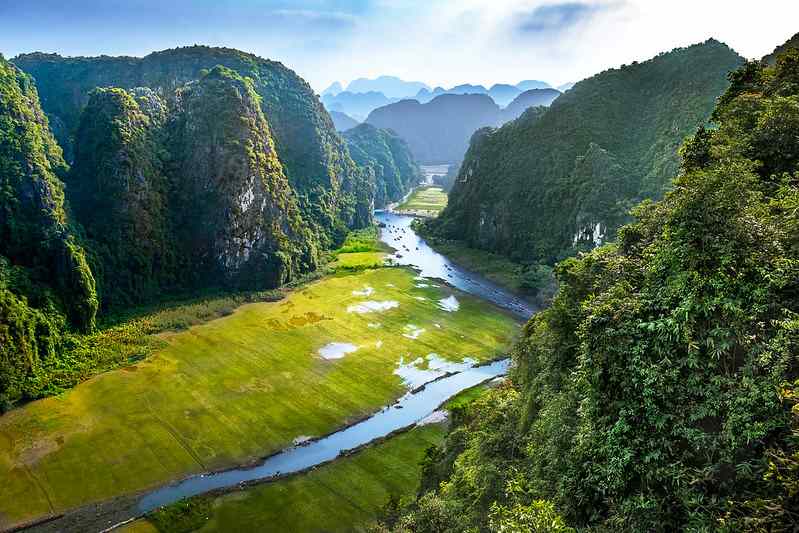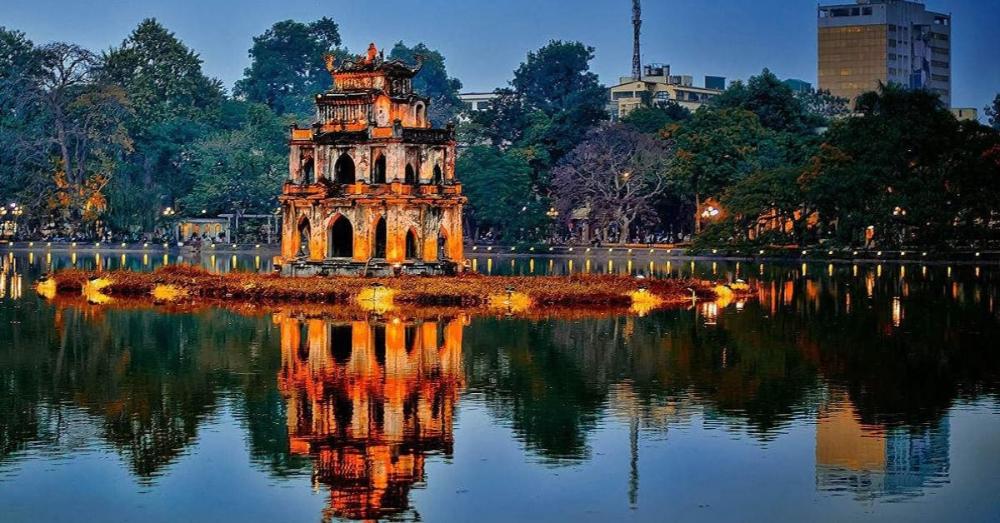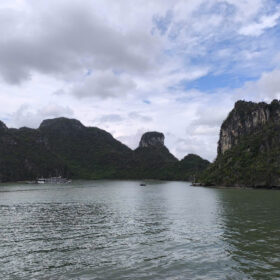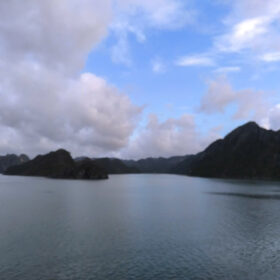Hanoi Typhoon Season 2025-2026: 15 Essential Facts Travelers Must Know
Hanoi’s typhoon season can dramatically impact your Vietnam adventure. This comprehensive guide reveals everything you need to navigate the stormy months safely while still enjoying the capital’s beauty and culture.
Understanding Hanoi’s Typhoon Patterns in 2025-2026
Hanoi’s relationship with typhoons differs significantly from what many travelers expect. As Vietnam’s historic capital situated approximately 100km from the coast, Hanoi doesn’t typically experience direct typhoon landfalls. Instead, the city faces secondary effects that can still profoundly impact your travel experience.
The 2025 typhoon season in Hanoi promises to be particularly noteworthy due to shifting climate patterns and the predicted moderate La Niña conditions developing in the Pacific. This weather phenomenon typically increases the frequency and intensity of tropical storms affecting Vietnam’s northern regions.
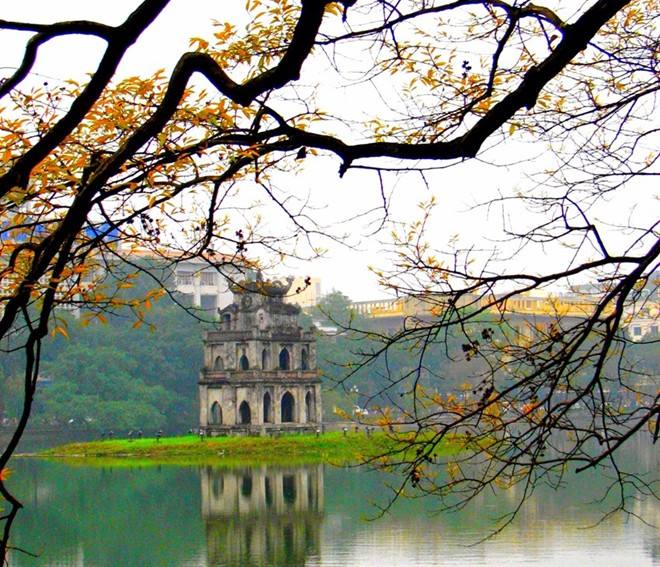
When Exactly Is Hanoi’s Typhoon Season in 2025-2026?
Hanoi’s primary typhoon risk period extends from June through November , with the most active and potentially disruptive period occurring between July 20 and October 10. According to the latest forecasts from the Vietnam National Center for Hydro-Meteorological Forecasting, August will likely represent the absolute peak of storm activity, with 3-4 significant weather systems potentially affecting northern Vietnam during this single month.
Meteorological data suggests an earlier-than-usual onset of the typhoon season, with the first major storms possibly appearing by mid-June—about two weeks earlier than historical averages. This shift aligns with broader climate change patterns observed across Southeast Asia in recent years.
How Severe Will Hanoi’s Typhoon Season Be?
Climate scientists project that the 2025 typhoon season will bring:
- Between 7-9 named tropical storms affecting Northern Vietnam (compared to the historical average of 5-6)
- Rainfall totals potentially reaching 350-400mm during peak storm periods
- Wind gusts in Hanoi potentially reaching 60-70 km/h during severe weather events
- A 35% increased risk of urban flooding compared to 2024
The intensity appears directly linked to warming sea surface temperatures in the South China Sea, which have increased by 0.9°C since 2000, providing more energy for developing storm systems.
Essential Weather Knowledge for Hanoi Visitors During Typhoon Season
When planning your Hanoi adventure during the stormy months, understanding the day-to-day weather patterns becomes crucial for both safety and enjoyment. Unlike the dramatic, immediate impact of typhoons on coastal areas, Hanoi experiences a more gradual buildup of meteorological effects.
Daily Weather Patterns During Typhoon Season
A typical day during Hanoi’s typhoon season follows a relatively predictable pattern:
- Mornings often start with moderate humidity (75-85%) and temperatures between 26-30°C
- By mid-afternoon (2-4 PM), rapid cloud formation occurs, with thunderstorms developing in 60-70% of days during August
- Evening downpours can deliver 40-100mm of rain in just 2-3 hours
- Night temperatures remain warm but humid (24-27°C)
This pattern intensifies significantly when a typhoon passes within 200km of Hanoi, creating what locals call “storm cycles” that can last 3-5 days with persistent rain and wind.
Flood Risk Assessment for Key Hanoi Districts
Not all areas of Hanoi face equal risk during the typhoon season. Based on historical flood data and infrastructure assessments for 2025, travelers should be particularly cautious about:
- Hoàn Kiếm District: While this popular tourist area has improved drainage, streets like Hàng Bông and Lương Văn Can still experience flooding depths of 30-50cm during heavy rain
- Hai Bà Trưng District: Particularly vulnerable around Bạch Mai and Trương Định streets, where flood waters can reach 60cm
- Cầu Giấy District: Areas near Dịch Vọng Park frequently experience prolonged flooding, sometimes lasting 12+ hours after major storms
The safest districts regarding flood risk include Ba Đình and Tây Hồ, which sit at slightly higher elevations and benefit from more modern drainage infrastructure.
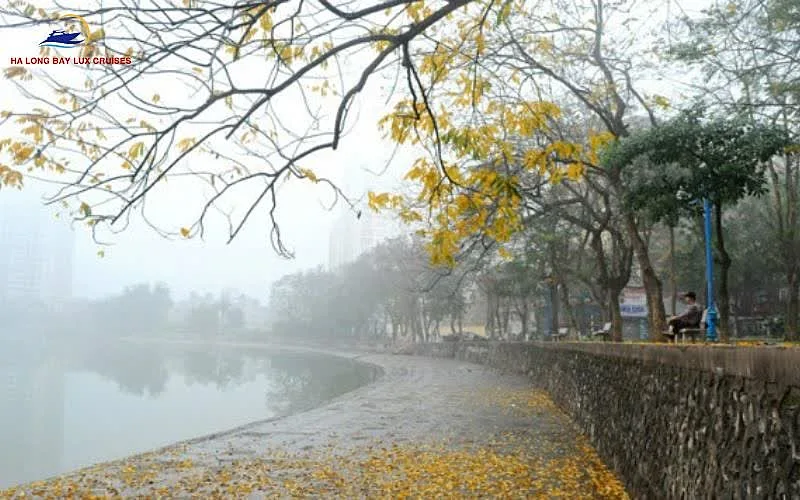
7 Smart Preparation Strategies for Travelers During Hanoi’s Typhoon Season
Visiting Hanoi during typhoon season doesn’t have to be a washout. With proper preparation, you can minimize disruptions and maximize enjoyment, even when the weather turns challenging.
Essential Items to Pack for Hanoi’s Rainy Season
Beyond your standard travel gear, bring these specific items to navigate Hanoi’s typhoon season comfortably:
- Quality rain poncho: Unlike umbrellas, which struggle in Hanoi’s gusty conditions, a full-coverage poncho (ideally reaching below the knees) provides superior protection
- Quick-dry clothing: Pack lightweight fabrics that dry within 3-4 hours at room temperature
- Waterproof phone case: Essential for navigating with maps during downpours; models rated IPX7 or higher offer the best protection
- Portable power bank: During severe storms, Hanoi can experience power outages lasting 2-8 hours
- Water-resistant footwear: Avoid fabric shoes; opt for rubber sandals or waterproof walking shoes
- Mosquito repellent: Increased standing water during typhoon season leads to 40-60% higher mosquito activity
These items are widely available in Hanoi, but quality and selection may be limited during peak storm periods when demand surges.
Monitoring Weather Conditions Like a Local
Vietnam has significantly improved its weather forecasting capabilities for 2025. Travelers can access reliable information through:
- VTVGo app: Offers real-time radar and 3-hour precipitation forecasts specifically for Hanoi districts
- Windy.com: Provides detailed wind pattern predictions up to 7 days in advance
- Vietnam Disaster Management Authority website: Posts typhoon warnings and safety advisories in English (updated every 6 hours during active storms)
- Local hotel concierges: Major hotels in Hanoi receive direct weather briefings from authorities and can provide personalized guidance
For the most accurate information, cross-reference these sources, as forecast accuracy improves dramatically within 48 hours of weather events.
Traveling Beyond Hanoi: Halong Bay Considerations During Typhoon Season
Many travelers visiting Hanoi plan excursions to the iconic Halong Bay, a UNESCO World Heritage site known for its emerald waters and thousands of towering limestone islands. While Halong Bay’s beauty remains breathtaking year-round, typhoon season introduces special considerations for this popular destination.
Cruise Cancellation Policies and Contingency Plans
Maritime safety regulations in Halong Bay have become increasingly stringent for 2025, with authorities prioritizing passenger safety above all else. This means:
- Cruises may be canceled with as little as 12-24 hours notice when typhoon warnings are issued
- Port authorities can declare full bay closures for 1-3 days during severe weather systems
- In 2025, the Halong Bay Management Board expects 15-20 full closure days spread throughout the typhoon season
When planning your Halong Bay adventure during this period, booking with established operators who offer clear weather policies becomes essential. HalongBayLuxCruises.com provides comprehensive support for weather-related disruptions, including:
- Free rebooking options for weather cancellations
- 100% refunds when cruises cannot be rescheduled
- Alternative land-based experiences when bay access is restricted
Their 2-day luxury cruises offer the best balance between experiencing the bay’s majesty while minimizing weather risks during typhoon season.
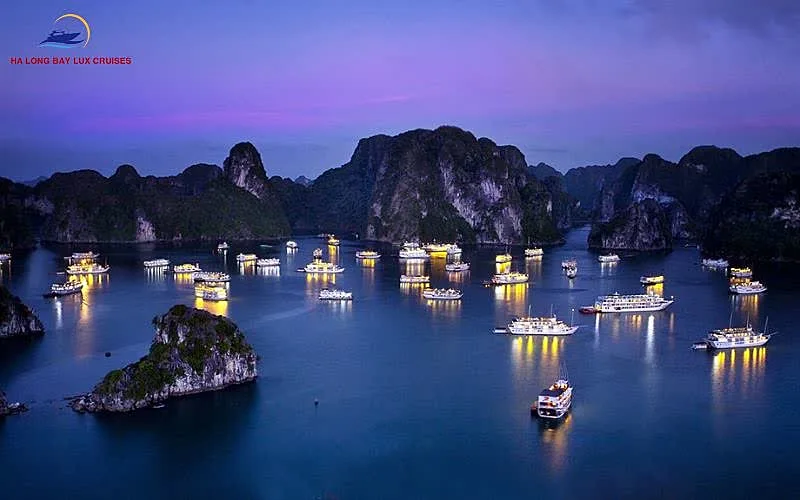
The Silver Lining: Post-Storm Beauty in Halong Bay
Interestingly, some of Halong Bay’s most photogenic moments occur immediately following storm systems. As skies clear, several remarkable phenomena typically appear:
- Dramatically enhanced visibility (up to 15-20km on clear days after storms)
- Mist formations around limestone karsts creating ethereal floating island effects
- Vibrant emerald water colors intensified by freshwater runoff
- Reduced tourist crowds, with visitor numbers often 40-60% lower immediately after weather events
For photographers and nature enthusiasts willing to be flexible with timing, scheduling a 3-day Halong Bay cruise during typhoon season can result in capturing the bay’s most spectacular and serene moments—if you’re patient with weather patterns.
Cultural Experiences Unique to Hanoi’s Rainy Season
Typhoon season transforms not just Hanoi’s physical landscape but also reveals cultural dimensions of the city that remain hidden during drier months. Savvy travelers can discover these authentic experiences that showcase Vietnamese resilience and traditions.
Rainy Day Café Culture and Culinary Delights
When downpours arrive, Hanoi’s residents retreat to the city’s abundant cafés and restaurants, creating vibrant indoor social scenes. During the 2025 typhoon season, look for:
- Rain-watching cafés: Establishments like The Note Coffee (Luong Van Can St) and Loading T (Hai Ba Trung St) offer covered balconies specifically designed for watching tropical downpours while enjoying Vietnamese egg coffee
- Monsoon season specialties: Dishes like cháo (rice porridge with century eggs), bánh đúc nóng (hot rice cake soup), and ốc luộc (boiled snails) become particularly popular during rainy weather
- Indoor markets: While outdoor markets may close, covered markets like Đồng Xuân become especially vibrant during rainy days, with vendor numbers increasing by approximately 25%
These cultural experiences offer authentic insights into how Hanoians have adapted to and embraced their city’s rhythmic relationship with rainfall over centuries.

Traditional Vietnamese Weather Beliefs and Practices
The typhoon season intertwines deeply with Vietnamese cultural beliefs that date back generations. During your visit, you might observe:
- Small altars with offerings to Ông Công Ông Táo (the Kitchen God), believed to protect homes during severe weather
- Traditional bamboo leaf wind chimes (chuông gió) hung near windows to detect subtle weather changes
- The practice of xông nhà (home fumigation with aromatic herbs) after major storms to purify indoor air
- Special prayers at Hanoi’s Trấn Quốc Pagoda during particularly threatening weather systems
Engaging respectfully with locals about these traditions can lead to fascinating conversations and deeper cultural connections during your stay.
Accommodation Strategies for Maximum Comfort During Stormy Weather
Where you stay in Hanoi during typhoon season significantly impacts your overall experience. The right accommodation choice provides not just shelter but becomes a crucial part of your travel strategy.
Best Hotel Locations for Weather Resilience
When booking accommodations for your 2025 Hanoi visit during typhoon season, prioritize:
- Hotels in the French Quarter: This area sits on slightly higher ground (2-3 meters above flood-prone Old Quarter) and features superior drainage infrastructure
- High-rise hotels: Rooms above the 5th floor offer better ventilation, reduced humidity, and elimination of street-level flooding concerns
- Properties with backup generators: Establishments like Sofitel Metropole, Apricot Hotel, and La Siesta Premium have invested in robust power systems that activate within 30-60 seconds of outages
Hotels in these areas typically charge 15-20% premiums during typhoon season, but the investment significantly enhances comfort and convenience during adverse weather.
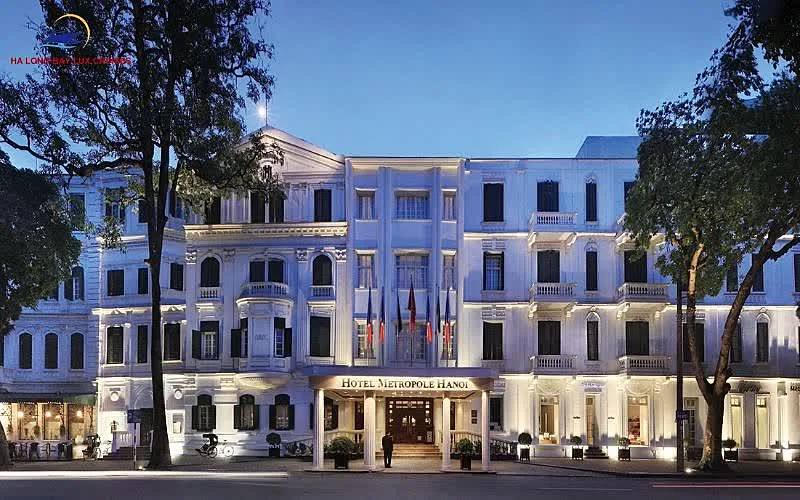
Indoor Amenities Worth Prioritizing
The ideal Hanoi accommodation during typhoon season offers robust indoor options for days when exploring the city becomes challenging. Look for:
- In-house restaurants serving both Vietnamese and international cuisine
- Spa facilities offering traditional Vietnamese massage and wellness treatments
- Covered rooftop bars or lounges providing protected city views
- Activity programs like cooking classes or cultural demonstrations
- Reliable high-speed internet (minimum 50Mbps) for entertainment and work needs
These amenities transform potential “stuck inside” days into meaningful parts of your Vietnamese cultural experience rather than frustrating delays.
Transportation Adjustments During Typhoon Conditions
Navigating Hanoi during storm periods requires strategic adaptation of your transportation plans. Understanding how different options perform during adverse weather helps maintain mobility and safety.
Reliable Transport Options When Storms Hit
Hanoi’s transportation landscape changes dramatically during heavy rainfall, with certain options becoming significantly more practical than others:
- Ride-hailing services: Apps like Grab and Be remain operational during most weather conditions, with only 5-10% service reduction during heavy storms
- Hotel car services: Major hotels maintain vehicles with experienced drivers familiar with flood-prone routes and detours
- Traditional taxis: Mai Linh and Taxi Group companies equip vehicles with raised air intakes specifically for navigating flooded streets
- Public buses: While slower during storms, Hanoi’s public buses rarely cancel service completely and follow modified routes to avoid the worst flooding
Notably, motorbike taxis (xe ôm) and bicycle rentals become impractical and potentially dangerous during heavy rain and should be avoided.
Street Navigation Strategies During and After Storms
When venturing out during or after rainfall in Hanoi, keep these specific navigation tips in mind:
- Elevated walkways: Use the pedestrian bridges near Hoàn Kiếm Lake, Thiền Quang Lake, and major intersections to avoid street-level flooding
- Covered walking routes: The French Quarter features connected awnings along many streets, creating relatively dry pathways
- Flooding indicators: Local knowledge suggests that when water reaches the bottom of motorcycle wheels (approximately 10cm deep), reconsider your route
- Recovery timing: Most Hanoi streets drain within 2-3 hours after rain stops, except in specifically flood-prone areas which may require 5-8 hours
Asking hotel staff to mark your map with recommended rainy day routes can significantly enhance your mobility during stormy periods.
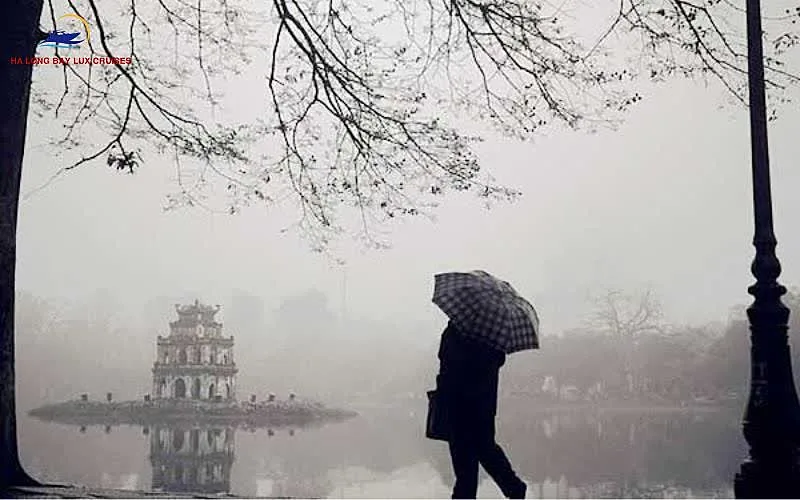
Health Considerations Unique to Hanoi’s Typhoon Season
The combination of heat, humidity, and increased water exposure during Hanoi’s typhoon season creates specific health considerations for travelers. Taking proactive measures helps ensure your trip remains enjoyable and illness-free.
Preventing Common Rainy Season Ailments
Several health issues become more prevalent during Hanoi’s stormy months. Preventative measures include:
- Waterborne infection prevention: Stick strictly to bottled water (even for teeth brushing); cases of waterborne illnesses increase by 30-40% during flooding periods
- Foot care: Change socks frequently and thoroughly dry feet after exposure to rainwater; fungal infections rise dramatically during typhoon season
- Mosquito protection: Apply repellent containing 20-30% DEET, particularly during dusk and dawn hours
- Heat rash management: Wear loose, natural fiber clothing; heat rash cases spike during the high humidity days between storms
Vietnamese pharmacies stock effective remedies for these common issues, but bringing basic medications from home ensures immediate access when needed.
Local Medical Resources for Travelers
Hanoi’s medical infrastructure has improved significantly for 2025, with several facilities offering excellent care for travelers:
- Vinmec International Hospital: Located in Times City, offers 24/7 emergency services with English-speaking staff
- International SOS Clinic: Provides consultation services specifically tailored to foreign visitors
- Family Medical Practice: Located near West Lake, specializes in treating common traveler ailments
Save these locations in your phone map application before arrival, and keep your travel insurance details readily accessible—typhoon season sees approximately 15% more tourist medical visits compared to drier months.
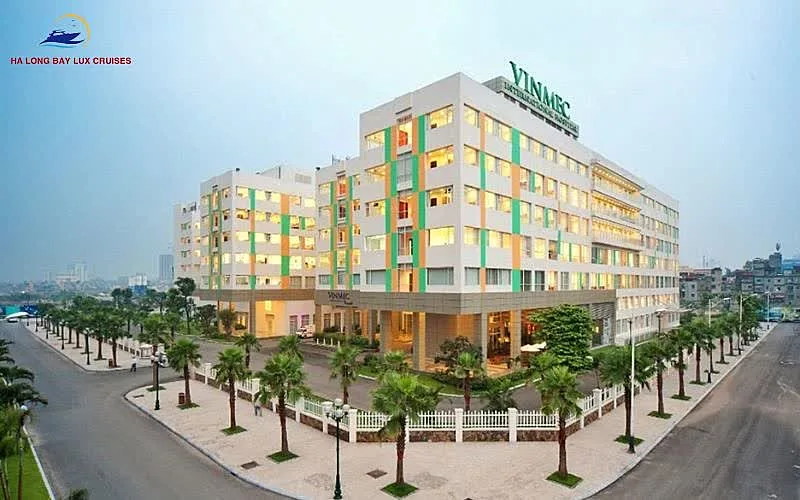
Finding Sunshine: Weather Patterns and Clear Day Predictions
Even during the height of typhoon season, Hanoi experiences significant periods of clear weather and sunshine. Understanding these patterns helps maximize outdoor activities during your visit.
Weather Windows and Optimal Timing Strategies
Weather in Hanoi during typhoon season follows discernible patterns that savvy travelers can leverage:
- Morning advantage: 70% of days feature dry conditions from 6-10 AM, ideal for visiting outdoor attractions like Ho Chi Minh Mausoleum and the Temple of Literature
- Post-storm clarity: The 24-48 hours following a major storm system typically brings reduced humidity and excellent visibility
- Weekly patterns: Statistical analysis shows slightly drier conditions tend to occur mid-week (Tuesday-Thursday) compared to weekends during the typhoon season
The Vietnam Meteorological Service has improved its 3-day forecasting accuracy to approximately 85% for 2025, making short-term planning more reliable than in previous years.
Indoor Attractions Worth Discovering
Hanoi boasts numerous world-class indoor attractions perfect for rainy days:
- Vietnam National Museum of History: Houses 200,000+ artifacts spanning Vietnam’s 4,000-year civilization
- Vietnamese Women’s Museum: Award-winning cultural museum with excellent English information
- Hanoi Opera House: Guided tours available daily, with performances scheduled 3-4 evenings weekly
- The Vietnamese Military History Museum: Features extensive indoor exhibits on Vietnam’s military history
- Ancient House at 87 Ma May Street: Preserved 19th-century merchant home showcasing traditional architecture
Many of these venues have extended their hours specifically for the 2025 typhoon season, recognizing the increased demand for quality indoor experiences during inclement weather.
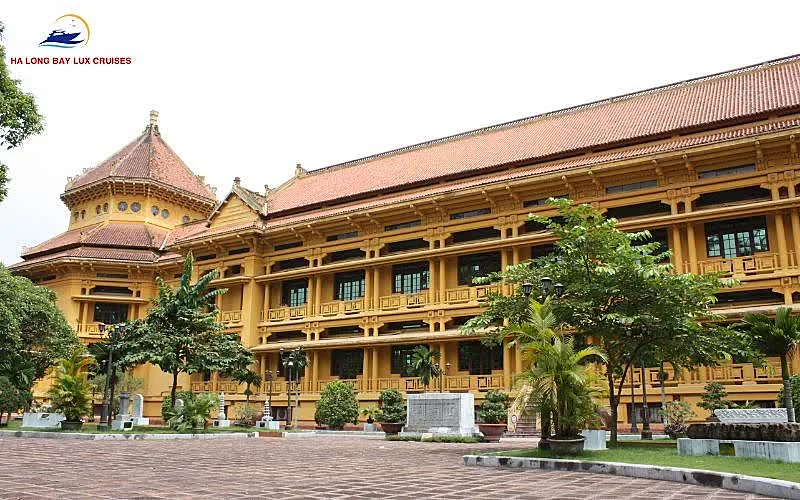
Conclusion: Embracing Hanoi’s Typhoon Season with Confidence
Hanoi’s typhoon season in 2025 presents both challenges and unique opportunities for travelers willing to prepare appropriately. With the right knowledge, equipment, and flexibility, this distinctive season can reveal dimensions of Vietnamese culture, cuisine, and daily life that remain hidden during drier, more tourist-heavy months.
The key to a successful visit lies in strategic planning—choosing appropriate accommodations, understanding weather patterns, packing suitable gear, and maintaining flexibility in your itinerary. By embracing rather than fighting against the rhythm of Hanoi’s natural cycles, travelers discover the authentic pulse of this remarkable city.
And for those extending their journey to include Halong Bay, remember that the bay’s limestone karsts have weathered countless typhoons over millennia. With reputable operators like HalongBayLuxCruises.com managing the logistics and safety considerations, the magnificent seascape remains accessible even during the stormier months—often revealing its most dramatic and photogenic aspects in the calm between weather systems.
With this comprehensive guide in hand, you’re well-equipped to navigate Hanoi’s 2025 typhoon season with confidence, turning potential challenges into memorable adventures in one of Southeast Asia’s most captivating capitals.
- Hotline | WhatsApp: +84.978.358.422
- Phone | WhatsApp: +84.962.261.687
- Email: halongbayluxcruises@gmail.com
- vietnammarveltravel@gmail.com










